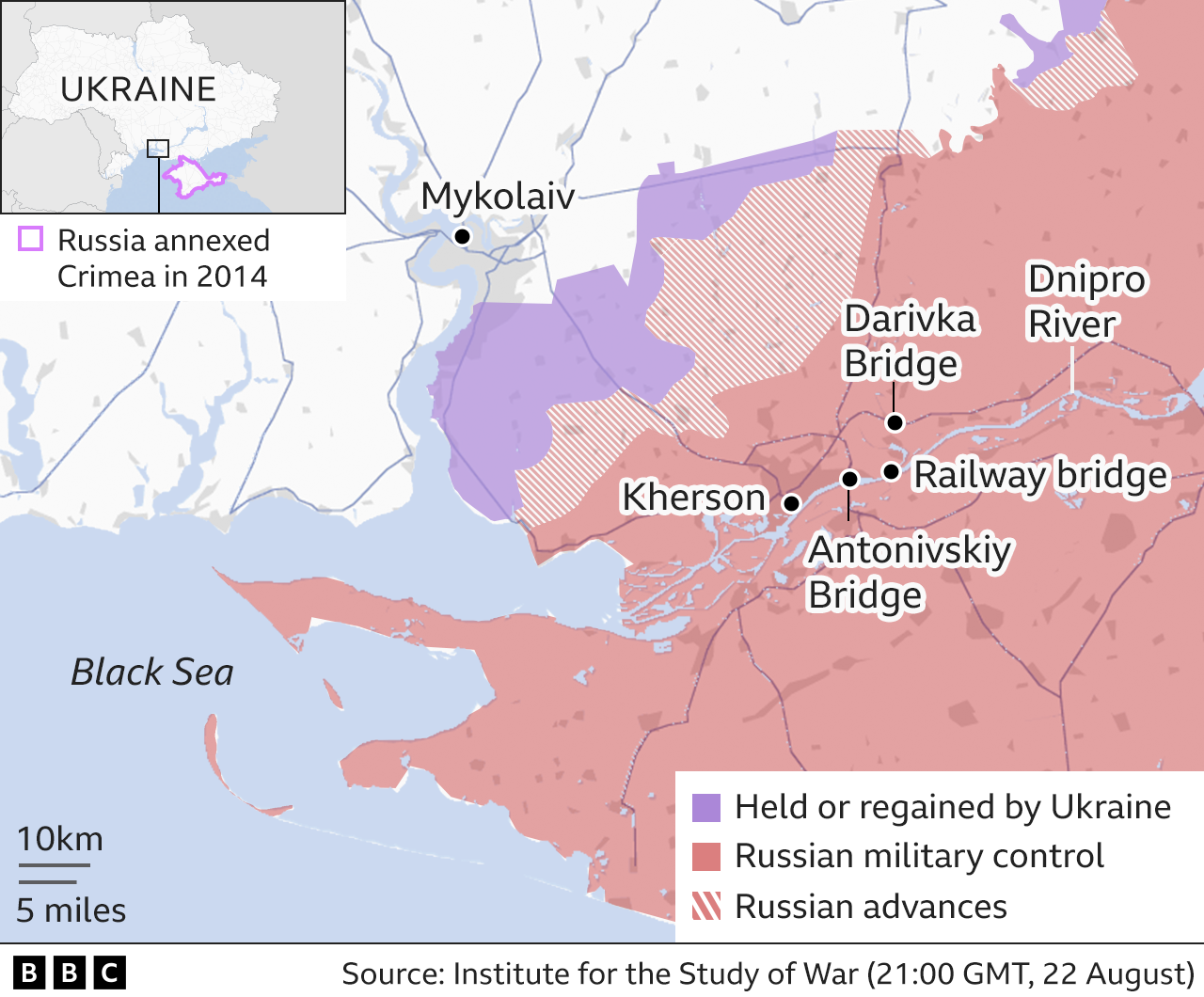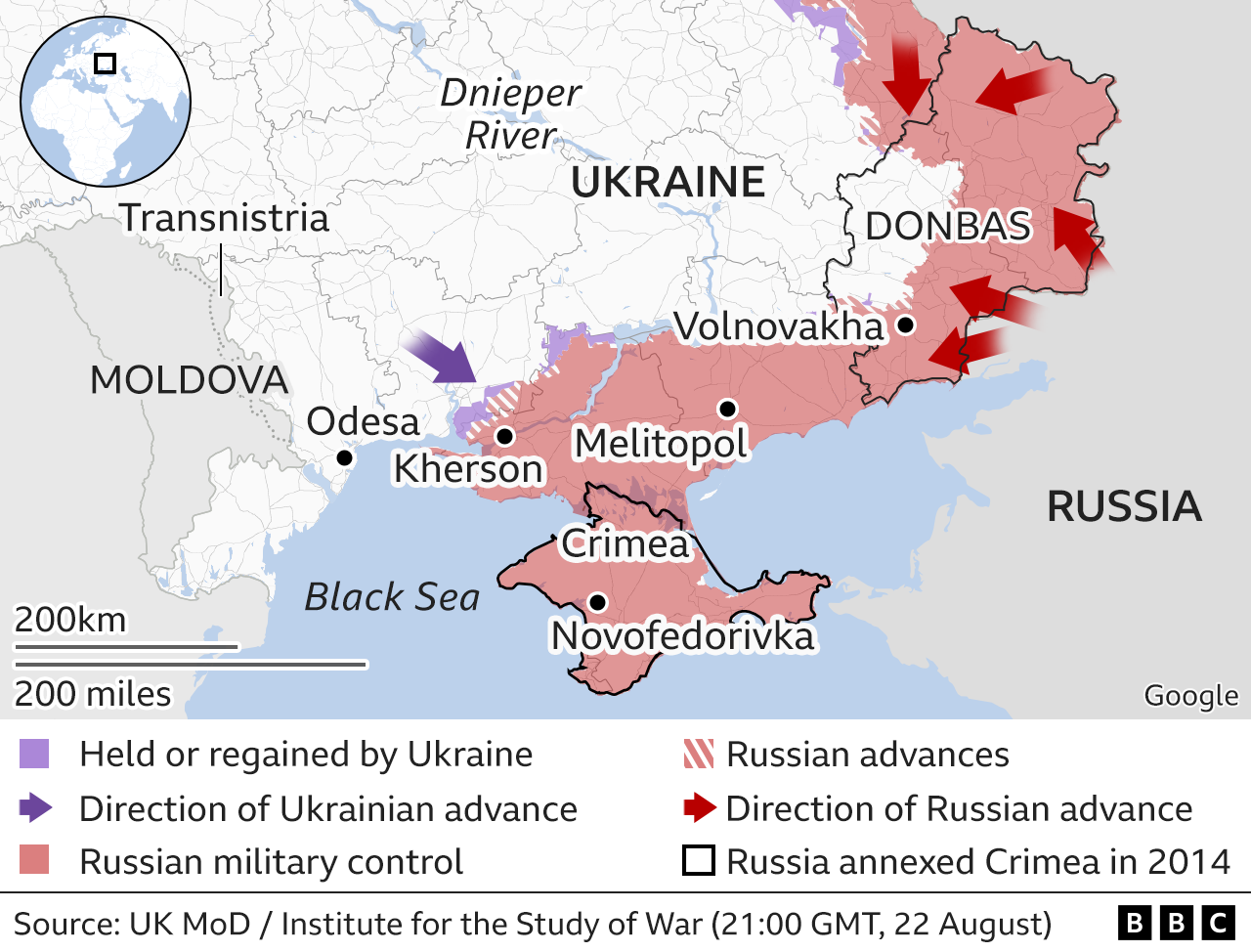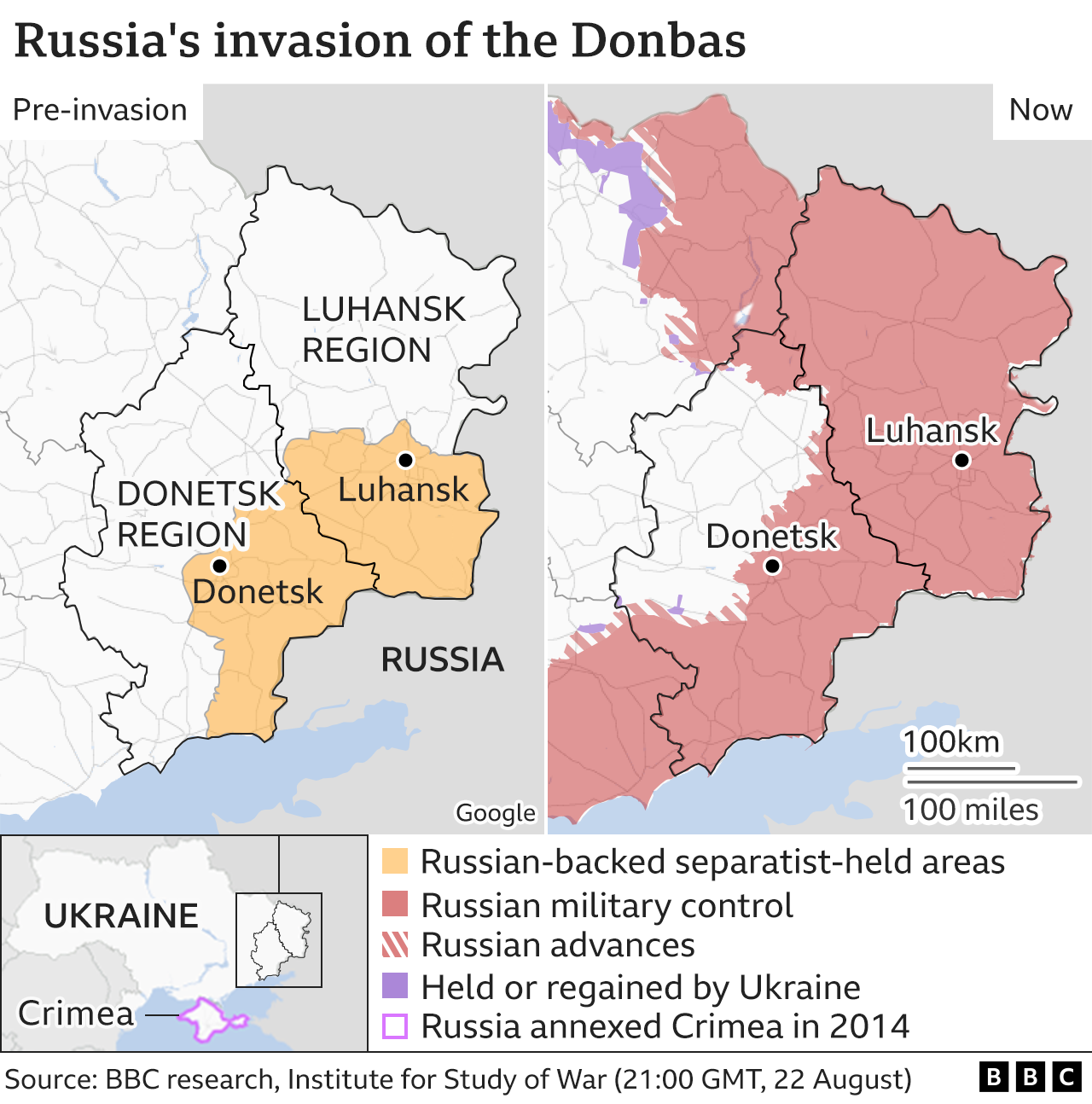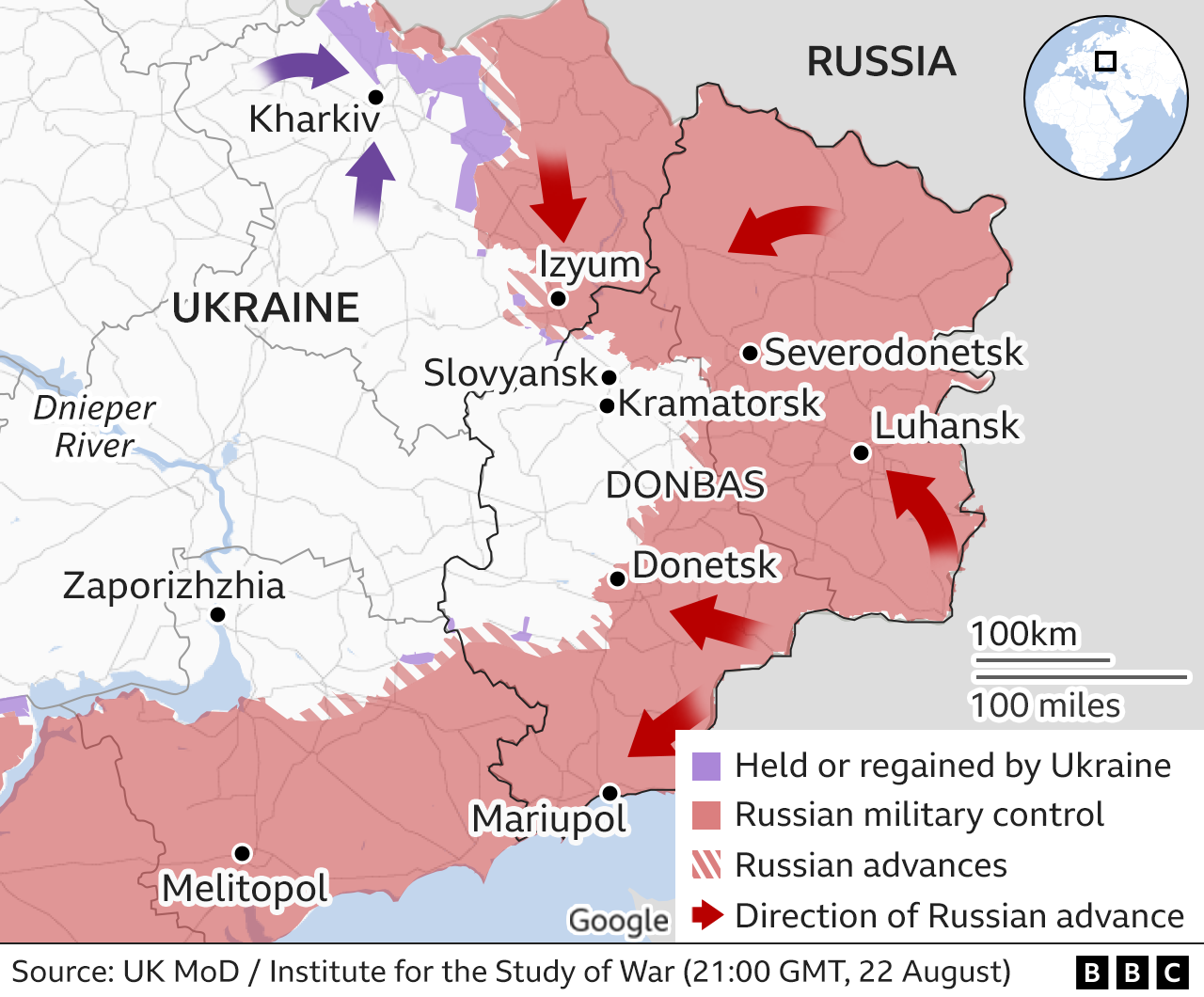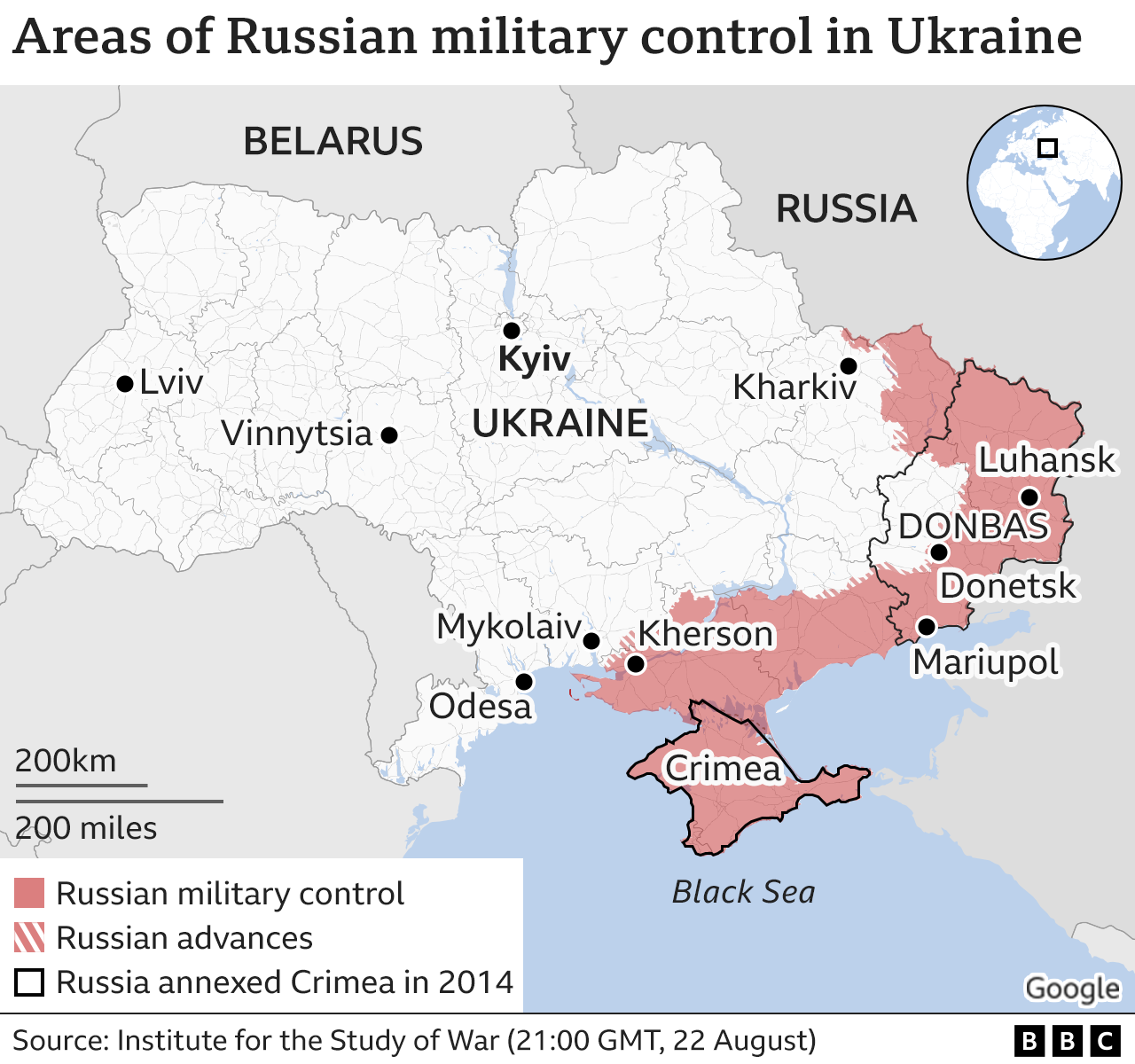BBC News 23 August 2022 - by the Visual Journalism Team
Ukraine is trying to push back Russian forces in the south whilst Russian troops continue to advance in the east.
Here are the latest developments:
Clashes in the south
Ukrainian forces are continuing attempts to push back Russian troops around the southern city of Kherson.
Online footage has shown explosions around the Antonivskiy bridge which has come under repeated attack since 19 July.
The bridge is a major connection between Kherson city and the eastern side of the Dnieper River.
Reports suggest that Ukrainian forces are using US-supplied Himars multiple rocket launchers in the area.
Russian forces have also conducted multiple assaults around Kherson and Mykolaiv, according to the Institute for the Study of War (ISW).
Russian and Ukrainian sources continue to report shelling close to the Zaporizhzhia nuclear power plant.
Britain, France, Germany and the US have welcomed a deal - approved by Russian President Vladimir Putin on Friday - to allow UN inspectors to visit the plant at a future date.
In the southern port of Odesa, a small number of vessels have been allowed to leave carrying grain, after an agreement was reached with Russia.
On Sunday, Russian forces said they had successfully destroyed an ammunition store in the city, and artillery strikes by Russian forces in Odesa are ongoing, according to the ISW.
In Crimea, Russian forces and installations have been targeted by Ukrainian drone strikes in recent days.
The Russian-appointed regional leader in Crimea said a Ukrainian drone targeting Russia's Black Sea fleet in the city of Sevastopol was shot down on Saturday.
Despite the fighting, the area has been popular with some Russian tourists.
Russia edging forward in east
Russian officials have said their forces are fighting for the "complete liberation" of the Donbas, which broadly refers to Ukraine's eastern regions of Donetsk and Luhansk, where Russian-backed separatists held significant territory before the invasion.
Russian forces now control all of the Luhansk region and they are continuing to make advances in the Donetsk region.
Russian troops have been conducting limited ground attacks in the area south of Izyum in recent days.
ISW analysts say that these are "spoiling", or disruptive attacks and not a coherent attempt to advance.
Russian attacks have also been reported around Bakhmut, south of Kramatorsk, and to the north of Donetsk city, with continued shelling and reconnaissance by Russian drones on long stretches of the line of contact.
Western weapons boost Ukraine
Western shipments of heavy weaponry - such as US Himars multiple rocket launch systems - have made it to the front line in recent weeks, allowing Ukraine to attack from greater range.
Retired British Army officer General Sir Richard Barrons told the BBC that he had no doubt that the arrival of "some western weapons has made a difference" to the Ukrainian side.
On Friday, the US announced a new $775 million (£655m) package of military aid to Ukraine, including reconnaissance drones to help target artillery.
With much of the fighting concentrated in a punishing artillery duel around key positions, many analysts say that improving the accuracy of Ukrainian strikes could be decisive in some areas.
Russia invaded Ukraine on 24 February, but Ukrainian forces retook large areas around Kyiv in early April after Russia abandoned its push towards the capital.
Areas in the west of the country, including Lviv, have seen missile attacks but no attempt by Russian forces to take and occupy ground.
The Russians have suffered heavy losses since the invasion began and significant quantities of Russian weaponry have also been destroyed or captured.
By David Brown, Bella Hurrell, Dominic Bailey, Mike Hills, Lucy Rodgers, Paul Sargeant, Alison Trowsdale, Tural Ahmedzade, Mark Bryson, Zoe Bartholomew, Sean Willmott, Sana Dionysiou, Joy Roxas, Gerry Fletcher, Jana Tauschinsk, Debie Loizou, Simon Martin and Prina Shah.
About these maps
To indicate which parts of Ukraine are under control by Russian troops we are using daily assessments published by the Institute for the Study of War with the American Enterprise Institute's Critical Threats Project.
To show key areas where advances are taking place we are also using daily updates from the UK Ministry of Defence and BBC research.
The situation in Ukraine is fast moving and it is likely there will be times when there have been changes not reflected in the maps.


